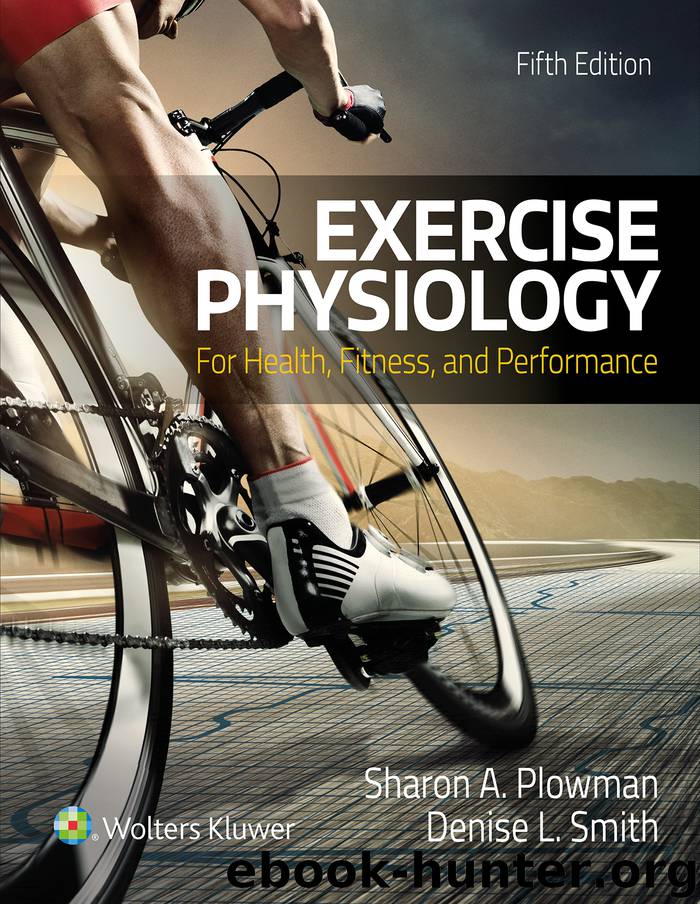Exercise Physiology for Health Fitness and Performance by Smith Denise & Plowman Sharon

Author:Smith, Denise & Plowman, Sharon [Smith, Denise]
Language: eng
Format: epub
Publisher: Wolters Kluwer Health
Published: 2016-08-27T16:00:00+00:00
Anatomical Sensors and Factors Affecting Control of the Cardiovascular System
The cardiovascular centers—and therefore, the sympathetic and parasympathetic outflow from those centers—are influenced by several factors in a variety of circumstances, including exercise. Figure 11.17 schematically presents the most important factors influencing the cardiovascular centers. These factors are described in detail in the following sections.
Higher Brain Centers
The cardiovascular medullary centers are influenced by several higher brain centers, including the cerebral cortex and the hypothalamus. Emotional influences arising from the cerebral cortex can affect cardiovascular function at rest. Input from the motor cortex, which is relayed through the hypothalamus, can influence cardiovascular function during exercise, leading to an increase in heart rate and vasodilation in active muscle. The influence of the cortex and hypothalamus on the cardiovascular centers during exercise is often termed “central command,” denoting that the signal to alter cardiovascular variables comes from the central nervous system.
Body temperature also affects the cardiovascular centers through the influence of the hypothalamus. An increased body temperature results in an increased heart rate, increased cardiac output, and vasodilation in the arterioles of the active muscles and skin.
Download
This site does not store any files on its server. We only index and link to content provided by other sites. Please contact the content providers to delete copyright contents if any and email us, we'll remove relevant links or contents immediately.
| Anatomy | Bacteriology |
| Biochemistry | Biostatistics |
| Biotechnology | Cell Biology |
| Embryology | Epidemiology |
| Genetics | Histology |
| Immunology | Microbiology |
| Neuroanatomy | Nosology |
| Pathophysiology | Physiology |
| Virology |
Tuesdays with Morrie by Mitch Albom(4690)
Yoga Anatomy by Kaminoff Leslie(4305)
Science and Development of Muscle Hypertrophy by Brad Schoenfeld(4088)
Bodyweight Strength Training: 12 Weeks to Build Muscle and Burn Fat by Jay Cardiello(3913)
Introduction to Kinesiology by Shirl J. Hoffman(3725)
How Music Works by David Byrne(3187)
Sapiens and Homo Deus by Yuval Noah Harari(2987)
The Plant Paradox by Dr. Steven R. Gundry M.D(2547)
Churchill by Paul Johnson(2506)
Insomniac City by Bill Hayes(2496)
Coroner's Journal by Louis Cataldie(2432)
Hashimoto's Protocol by Izabella Wentz PharmD(2331)
The Chimp Paradox by Peters Dr Steve(2297)
The Universe Inside You by Brian Clegg(2097)
Don't Look Behind You by Lois Duncan(2079)
The Immune System Recovery Plan by Susan Blum(2027)
The Hot Zone by Richard Preston(1983)
Endure by Alex Hutchinson(1964)
Woman: An Intimate Geography by Natalie Angier(1882)
